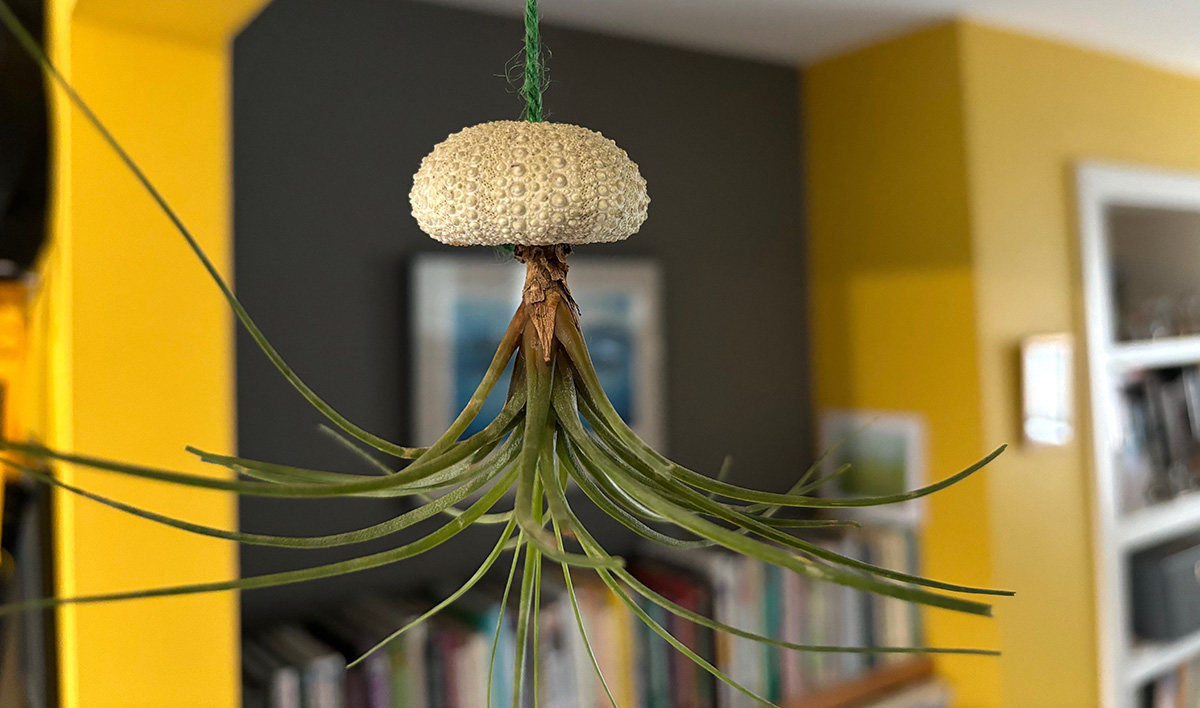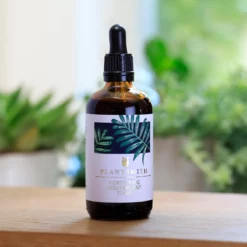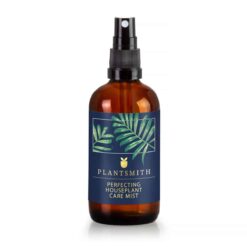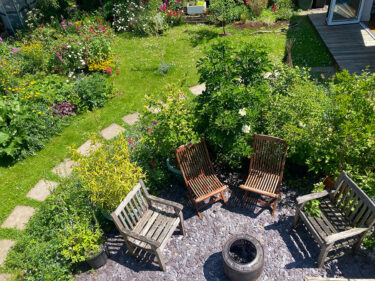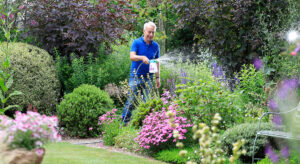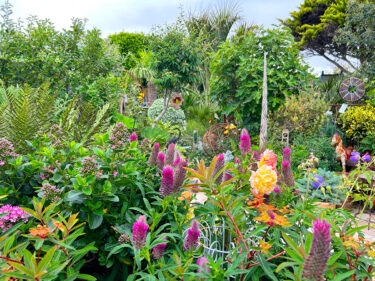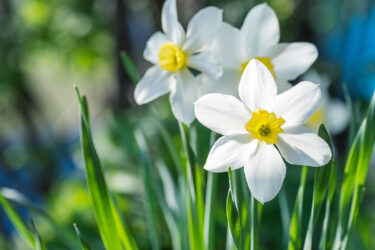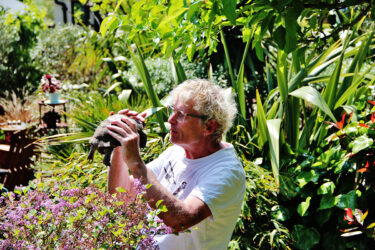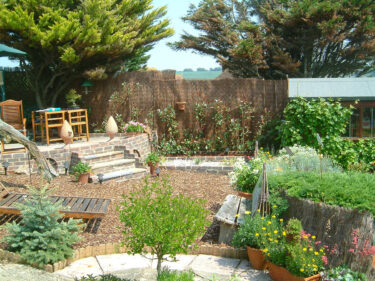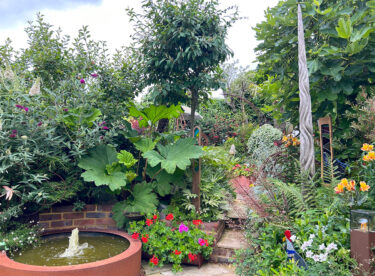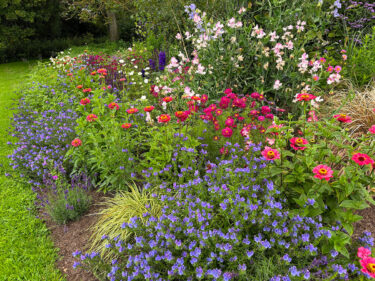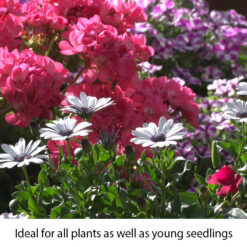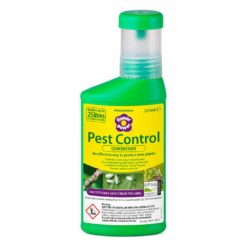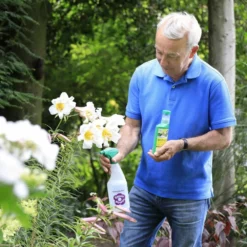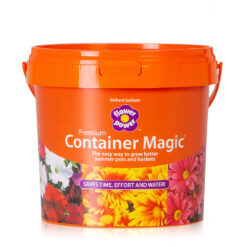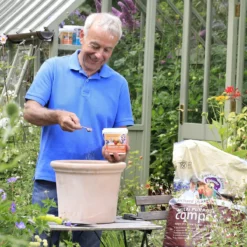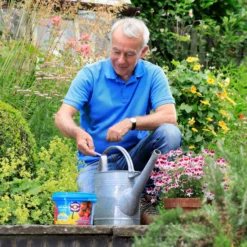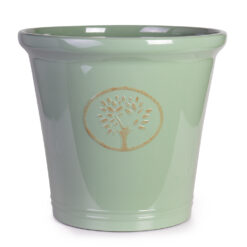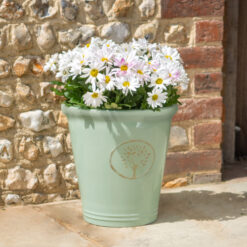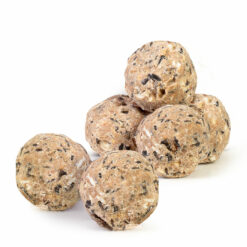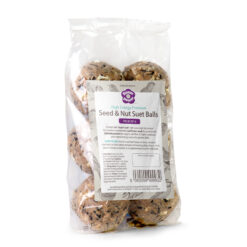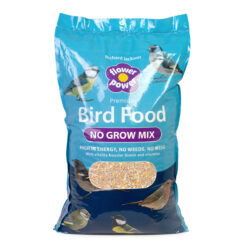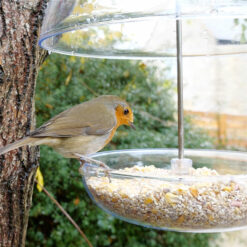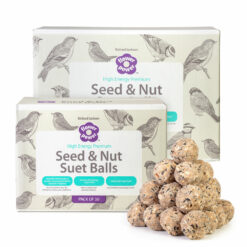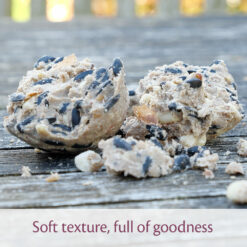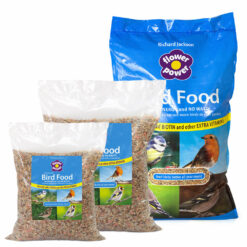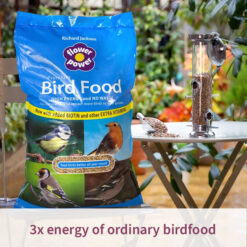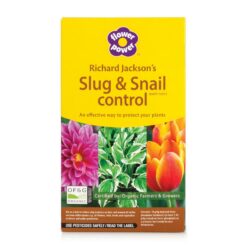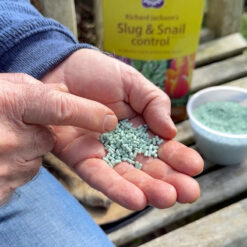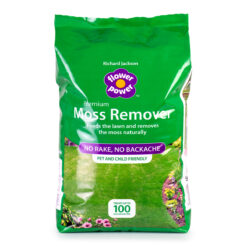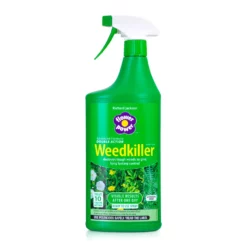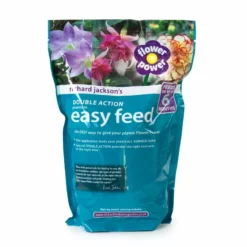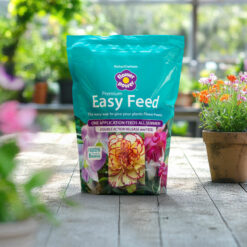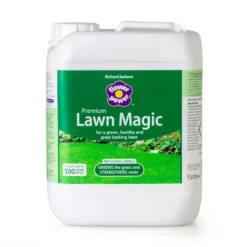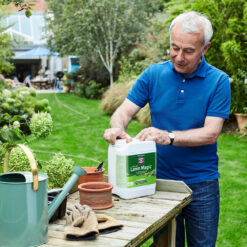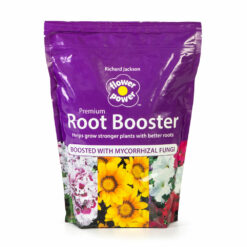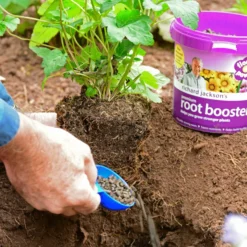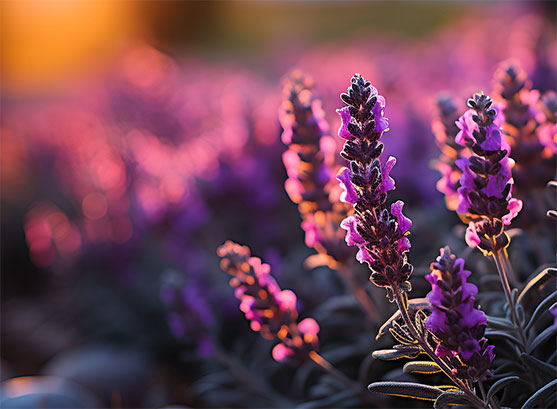Houseplants are a great way to get children interested in nature. Inspiring young minds can lead to a path of discovery and appreciation for the natural world which will hopefully follow them into adulthood. When my son was younger, I always involved him when I was looking after plants; letting him plant things in the garden, bring plants indoors, snip off dead flowers and do the watering.
Giving a child responsibility for a plant also instills nurturing skills and even if their attention span is limited, having plants around in their everyday life will set the foundation for feeling content in green spaces.
So, which plants are easy to look after, quirky and fun and how can we engage children in appreciating houseplants?
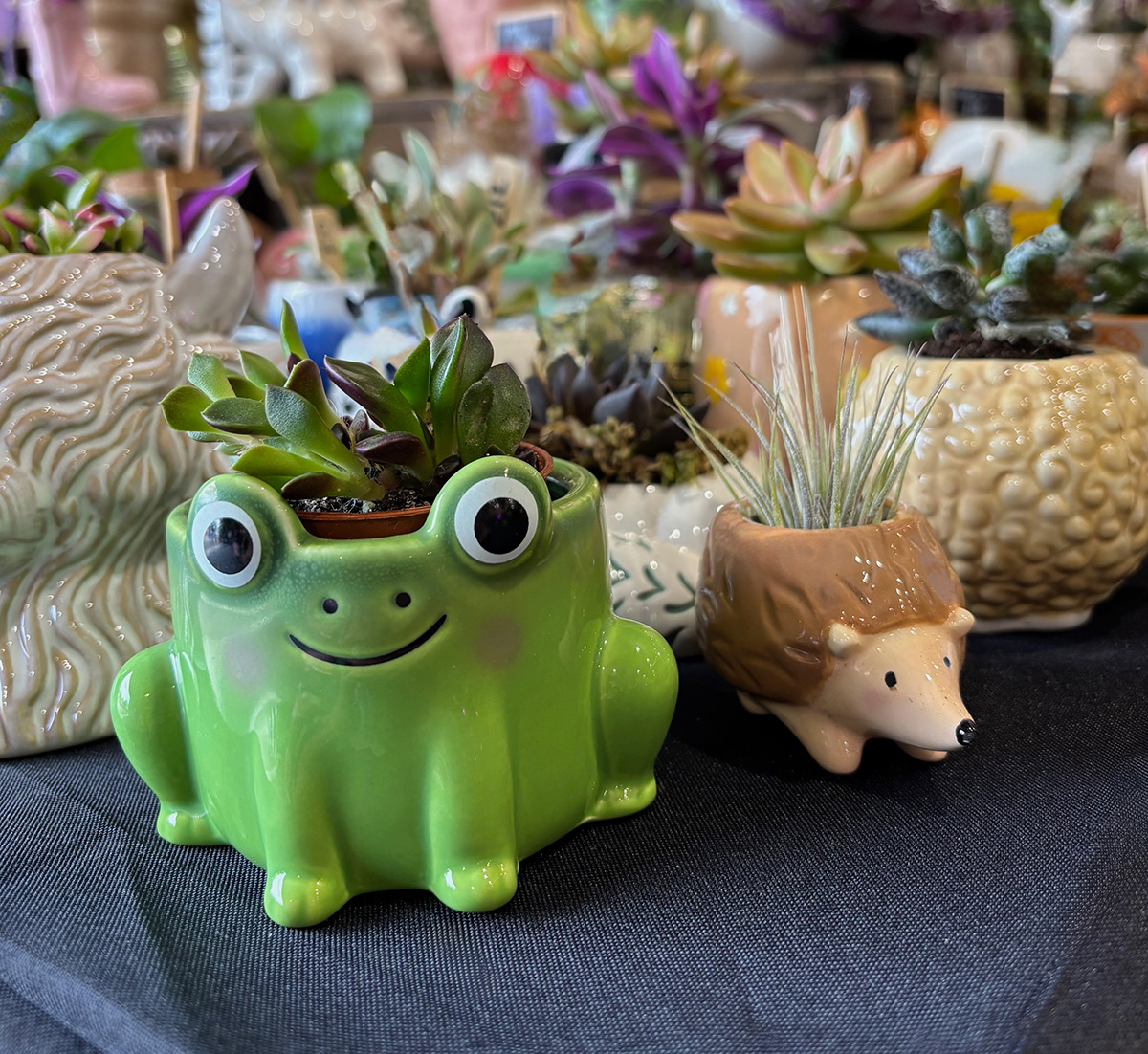
Read on to discover some amazing houseplants that adorn my home along with some tried and tested projects to captivate imagination.
Snake plant (Dracaena trifasciata)
Not only do snake plants have a cool name which is bound to attract attention but its long leaves resemble swords or a spiky dinosaur’s back so it certainly sets it apart from many other houseplants. This stunning architectural plant has stripy green leaves often edged with a gold margin and can reach an impressive height of a couple of metres.
Snake plants have the added bonus of producing oxygen at night promoting a better night’s sleep; a benefit for the whole family! They are also well known for removing toxins from the environment so rest assured this is one positive plant. I have made sure we have a snake plant by our beds in every bedroom (any excuse for more plants).
Snake plants can survive fairly challenging conditions from low light to sparse watering, so they are perfect for busy little people who may have other things on their mind than watering their houseplants!
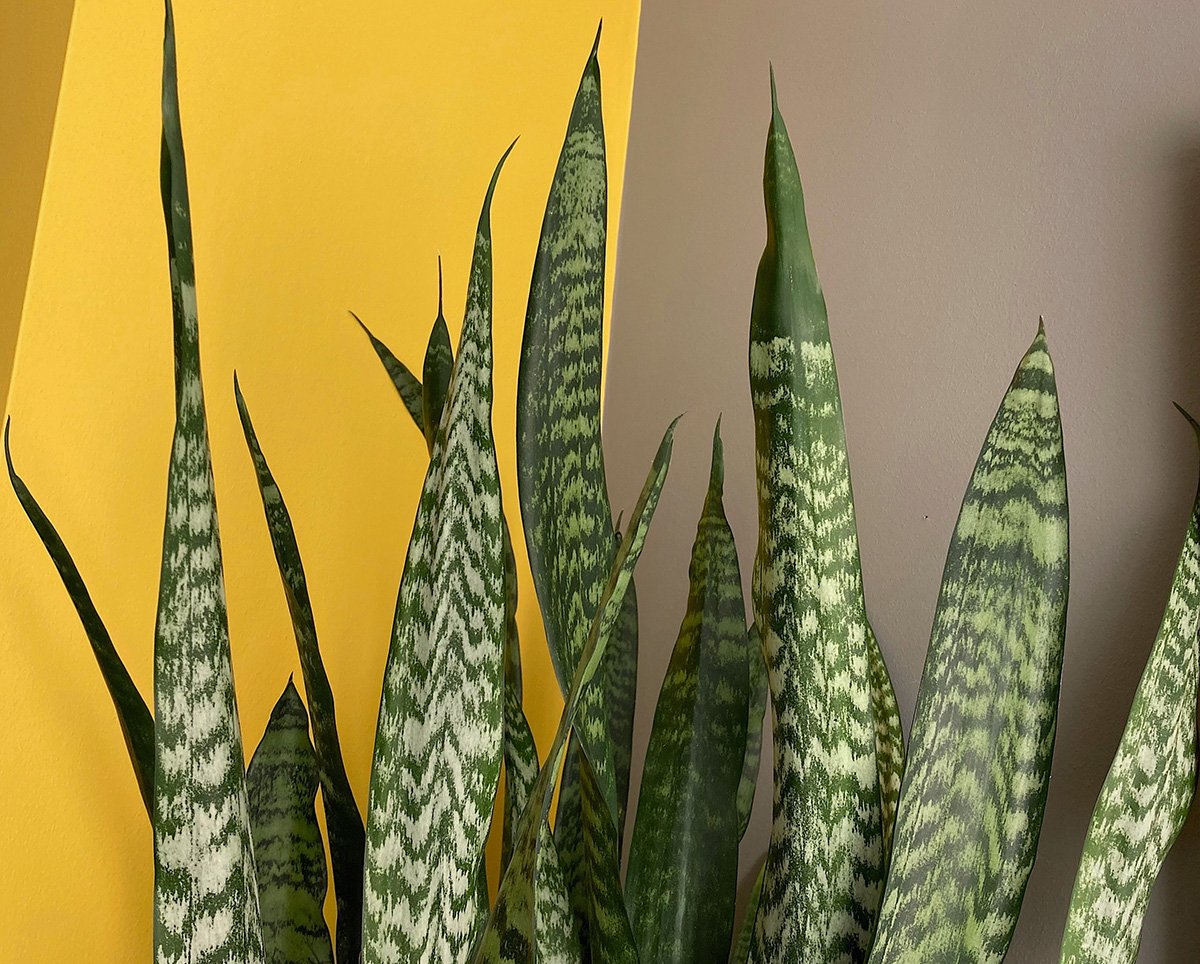
Chinese money plant (Pilea peperomioides)
Who can resist plants shaped like a UFO? This unusual succulent has dark waxy leaves, which resemble flying saucers and is super easy to look after needing minimal attention which makes it perfect for little-un’s where watering might not be high on the list of priorities. Rotate the plant pot every couple of weeks so all leaves receive light and grow evenly.
Pilea peperomioides is known by many common names from Chinese money plant, the Friendship plant or the Pass-It-On plant on account of its ability to repeatedly multiply. It is easy to pot-on baby pilea, simply pull off the new shoots and pop in a little pot of peat-free compost. These make lovely presents; your child could pass on a pilea to their pals.
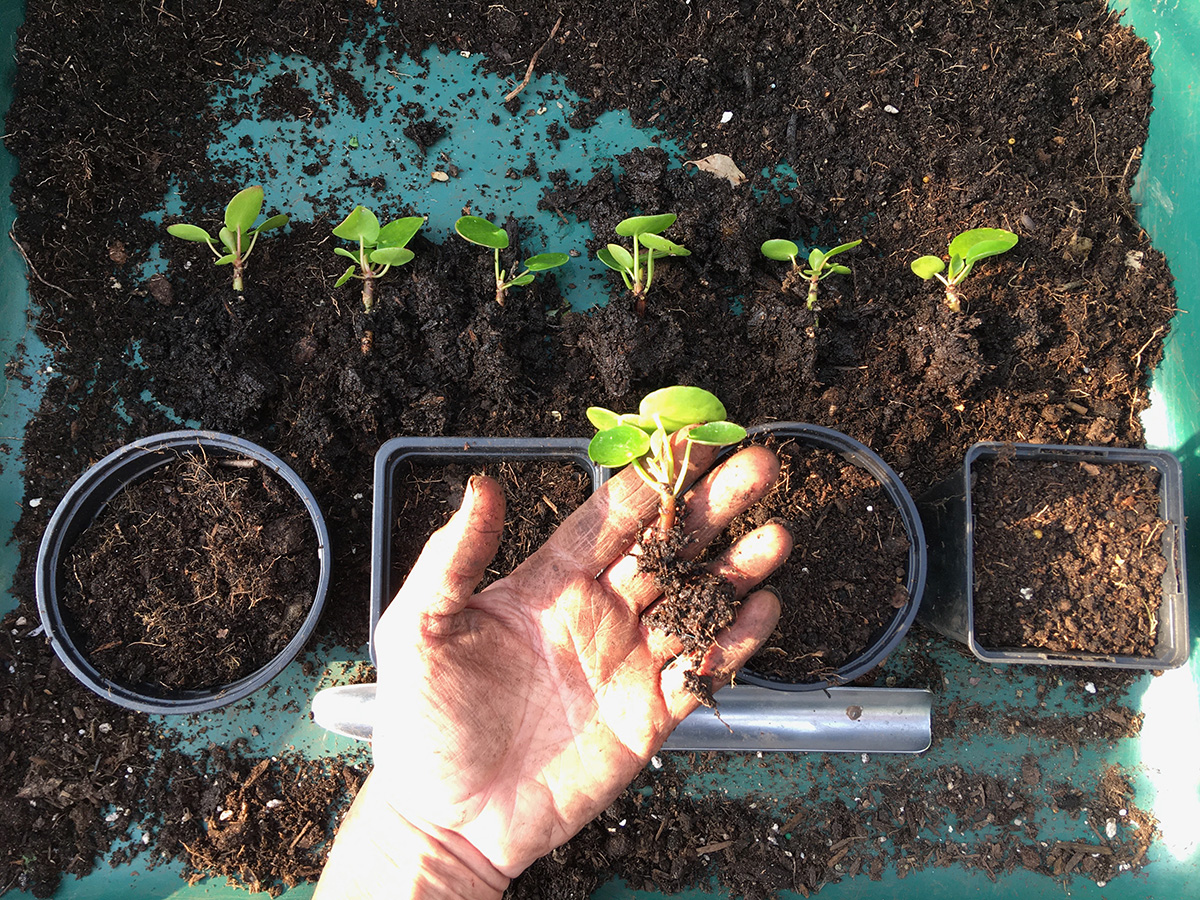
Air plants
Tillandsia are epiphytes, which means that they grow on the surface of another plant for support rather than food; both host and tillandsia live happily side-by-side. In your home regularly mist them and dunk once a week in water to keep them hydrated.
Part of the Bromeliad family, air plants grow without soil so lend themselves to a vast variety of unusual ways in which they can be displayed. With over 650 species there is plenty of choice, with some really funky forms. From Spanish moss (Tillandsia usneoides), whose ghostly strands are straight out of a halloween film set, the sky plant, (Tillandsia ionantha), that resembles a multi-coloured pineapple, Tillandsia stricta, which bursts out from its base like a fountain and Tillandsia caput medusae also called the Octopus plant or Medusa’s head which contorts into elegant, twisted leaves reminiscent of Greek mythology’s Medusa or a writhing octopus.
Get crafty
A great way to engage children with plants is to keep their hands busy with a craft project. Why not create your own air plant jelly fish. You will need a responsibly sourced sea urchin shell, some garden twine and an Octopus plant (Tillandsia caput medusae), but use whatever air plant you have available.
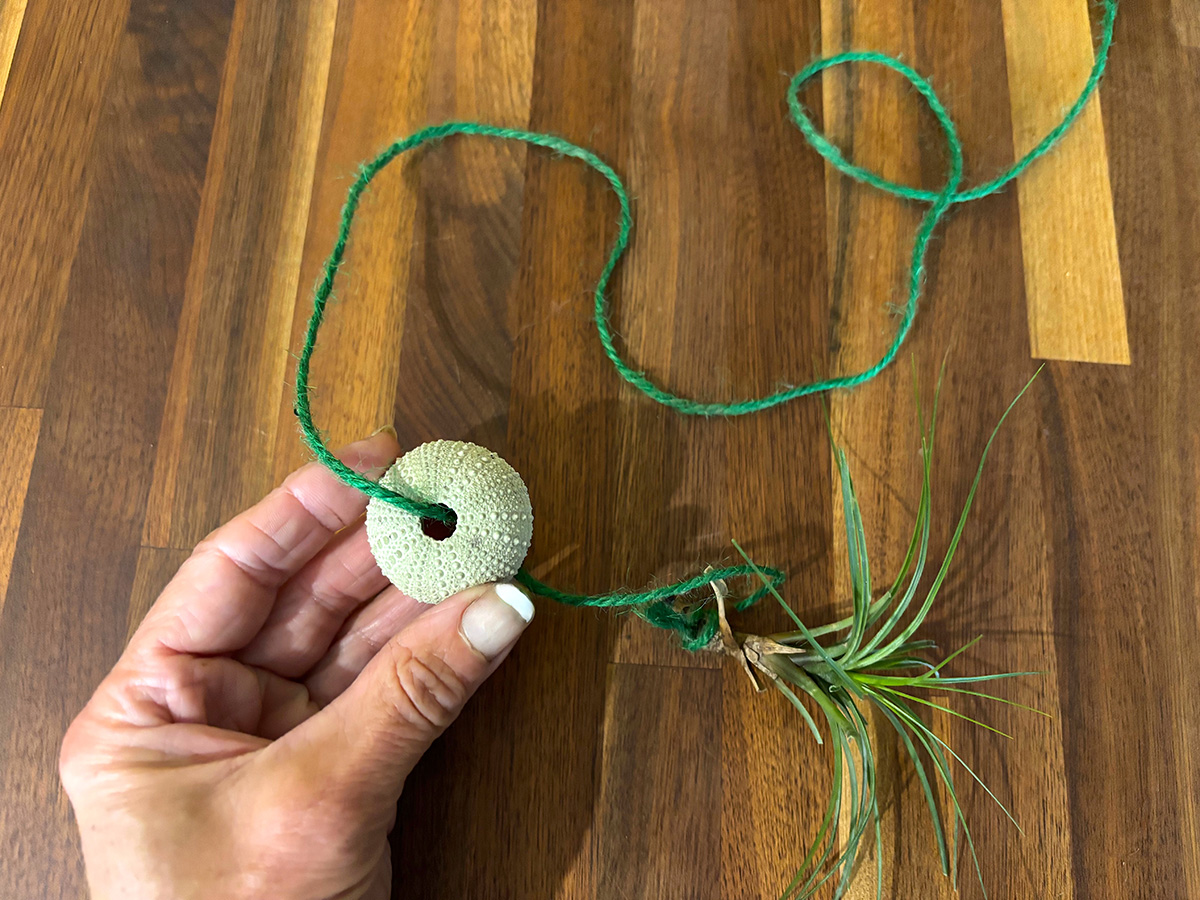
Gently wrap twine round the plant’s foliage near its base. Secure with a knot then thread the other end of the twine through the top hole of a sea urchin; this will make sure the plant does not fall out of the shell. Pull the air plant into position; gently does it, the shell is very fragile. Loop a knot on the top end of the twine to make a hanger and then suspend from a shelf or ceiling. Enjoy your tillandsia tentacles. Hang a few together to create an underwater scene.
Carnivorous plants
Carnivorous plants hold allure and can be a gateway plant for many. From Venus fly traps to pitcher plants, the morbid fascination of a plant digesting insects will generally make eyes widen but perhaps be a little cautious in filling your home with these meat eaters, they require very specific growing conditions that can be tricky to recreate indoors making them hard to keep alive and nothing will be more demoralising than a dead plant. But keen green fingers may enjoy years of decomposing insects and fascinating plant antics, so if you are up for the challenge go for it!
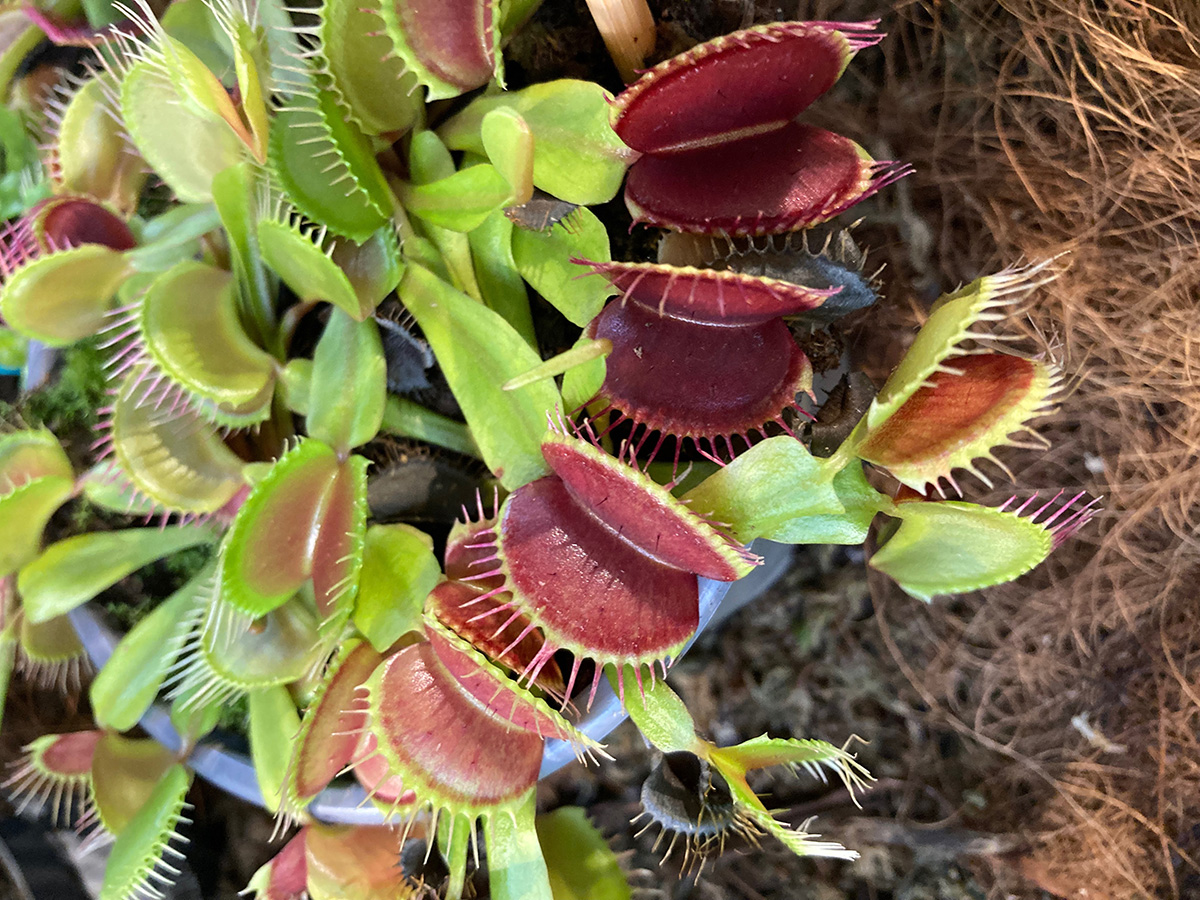
Terrific terrariums
Terrariums hold fascination with adults and children alike and can be made from any glass container, even a jam jar. Just grab a few materials and a bit of imagination and make your very own mini-ecosystem.
A terrarium is an indoor container garden which can be sealed or open; they are ideal for slow growing plants with interesting foliage. By far the easiest terrarium to keep alive is an open unit; this means the plants are open to the air so can be watered through the top and are less likely to succumb to fungal build ups.
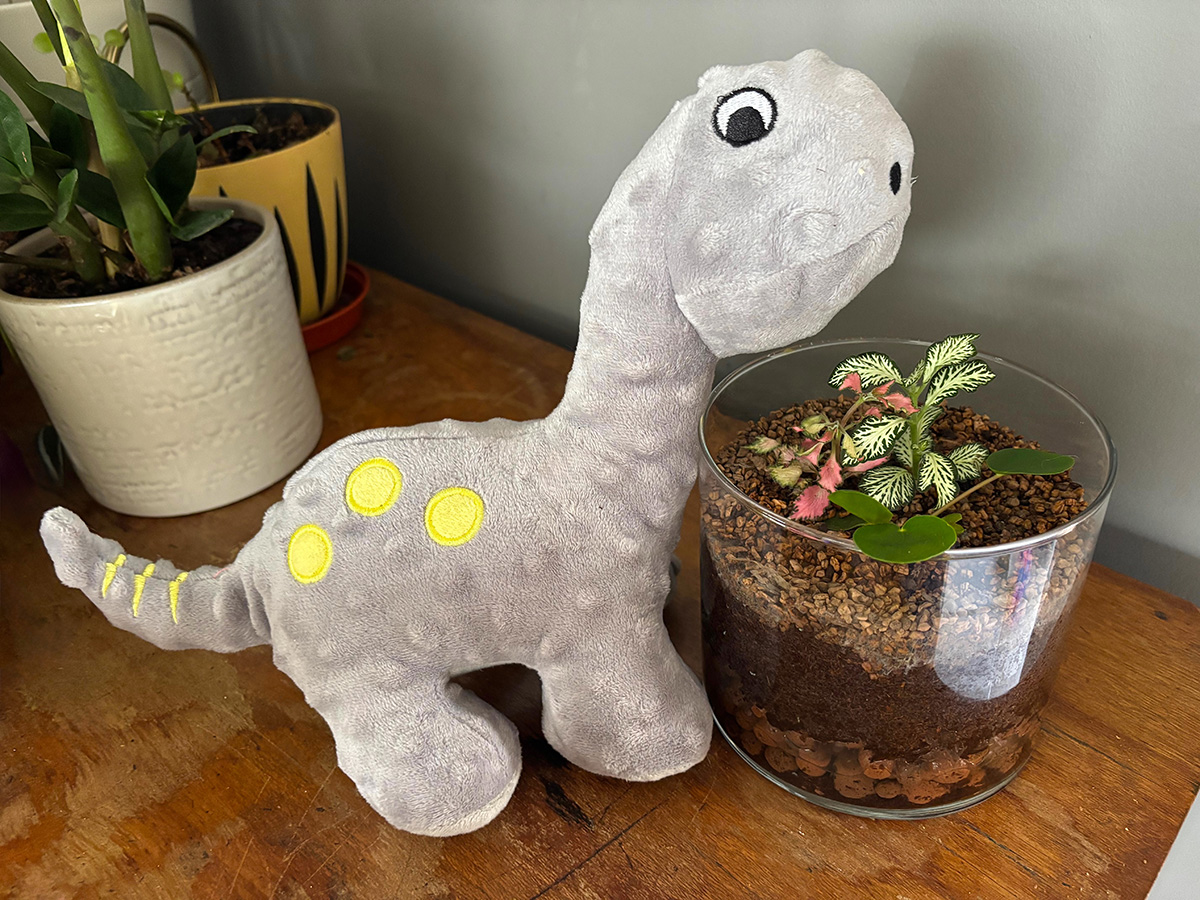
Grab a teaspoon, tablespoon, tongs or mini trowel, pencil or chop stick and spray bottle to mist plants. You’ll also need a glass container, clay pebbles, gravel or small stones, moss (optional), terrarium plants, some sterile potting compost and decorative features (optional). With a bit of care plants like fittonia and ferns, pilea and pothos, peperomia and streptocarpus will thrive.
For the simplest terrarium, line the base of your jar with a layer of small stones or if you have them LECA (lightweight expanded clay aggregate) which will act as a reservoir for excess water to sit, keeping water away from houseplant roots to prevent them from rotting. Then part-fill the jar with peat-free gritty compost leaving a good gap at the top away from the rim. Insert your chosen plants, a tea spoon is useful for making a hole in the compost but a finger will do! Firm plants into place then finish off with a thin layer of grit or fungus gnat topper. Then go wild; decorate your pots with your favourite Lego figures, teddies, toys, shells or stones.
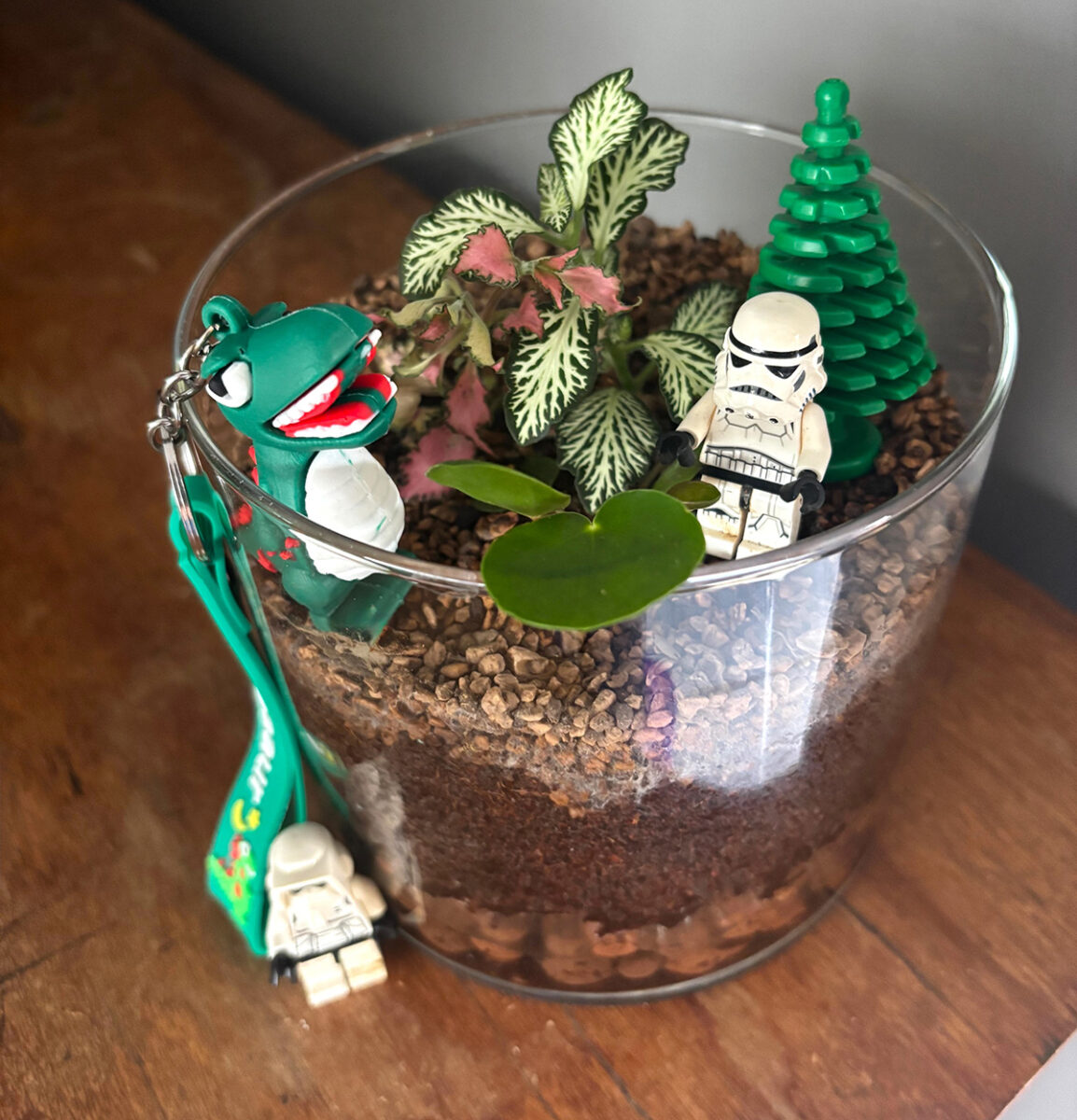
NB: Always check plant labels and wear gloves; some plants may be toxic or cause skin irritation. Wash hands after handling and never ingest houseplants.
